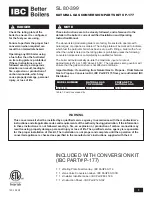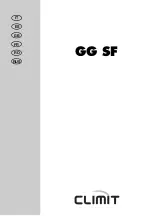
22
1 – Boiler
2 – Two way safety vent DBV 1 – 02
3 – Safety valve
4 – Transforming valve
5 – Filter
6 – Ball-shaped cock
7 – Pump
8 – Surplus heat removal
9 – Bleed valve
I – Cooling water inlet
II – Heating water outlet
III – Return water inlet
Fig.
№
. 16 The recommended scheme of the two way safety vents DBV 1 – 02 connection
Regular maintenance
Once a year it is necessary to turn the safety vent’s head to remove possible impurities formed in the vent. Clean
the cooling water inlet filter.
In case of using an open expansion tank it is not necessary to use a pressure protecting device against
overheating.
Every heat source in an open heat system must be connected with an open expansion tank positioned at the
highest point of the heat system. The expansion tanks must be rated in the way that they can contain the changes
in water volume resulting from heating and cooling.
The open expansion tanks must be equipped with non-closable bleeder and an overflow pipes. The overflow pipe
must be designed in the way that it safely drains off the maximum flow volume entering the system. This can be
achieved by rating the overflow pipes by one DN higher than that of the filling piping. The expansion tanks and their
connecting pipes must be designed and positioned in the way that freezing is reliably inhibited.
Fig.
№
. 17 The examples of open expansion tanks connection
1 Heat source
2 Expansion tank
3 Safety piping
4 Expansion piping
5 Overflow piping
6 Filling piping
7 Water level limiter
8 Reverse piping











































